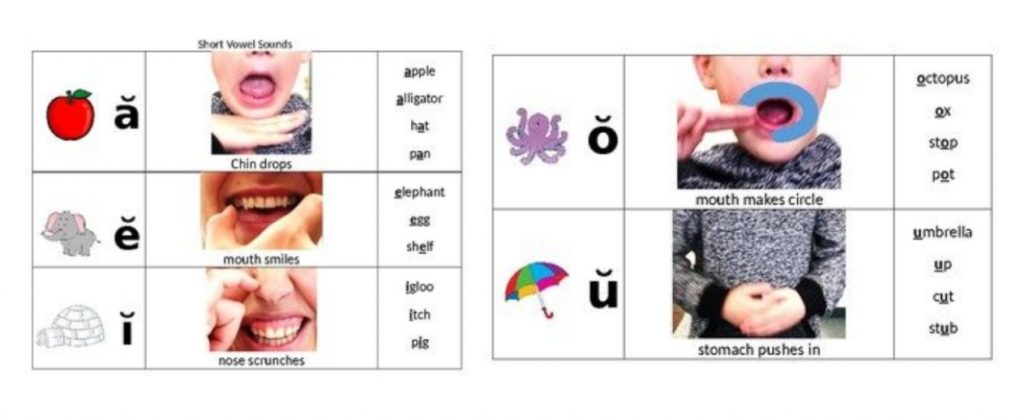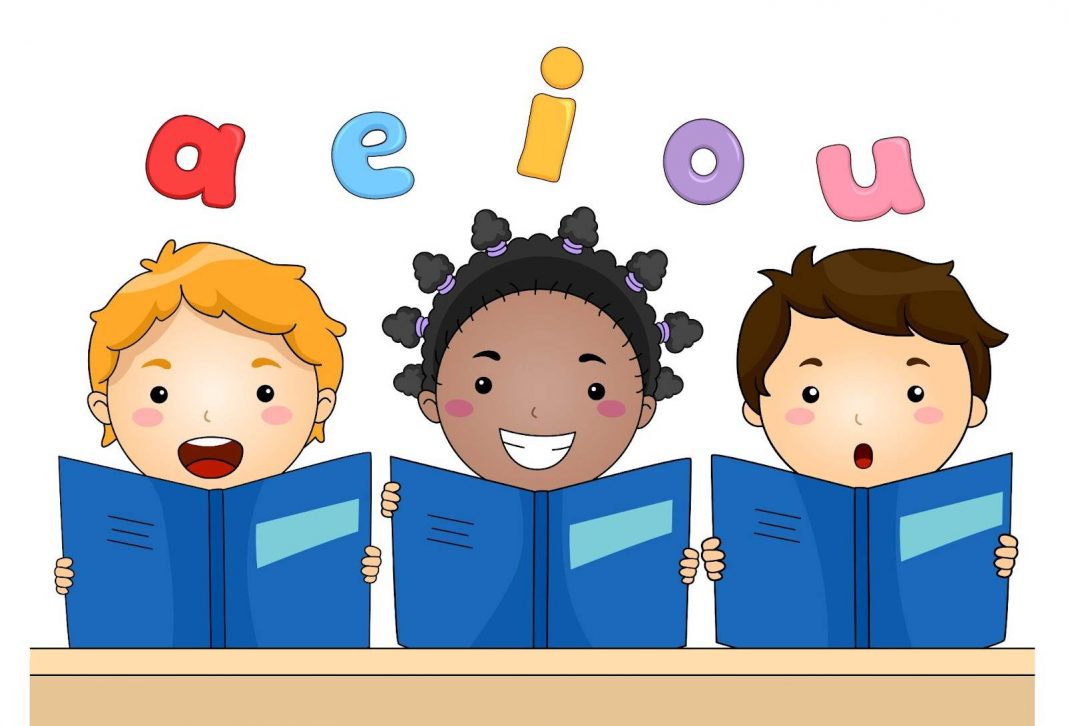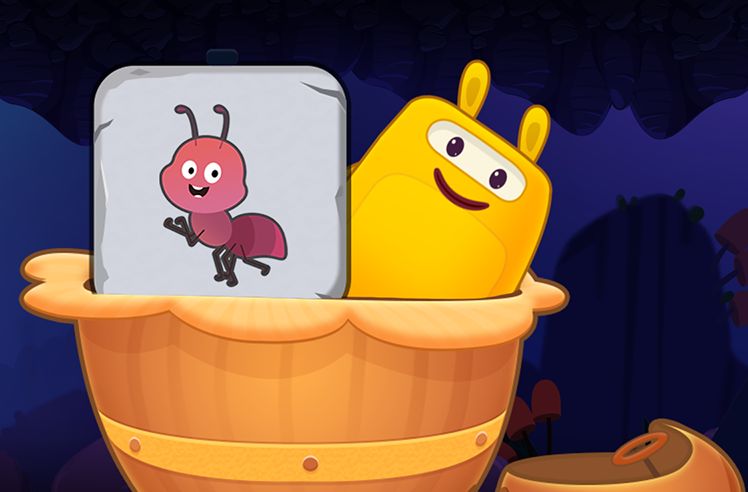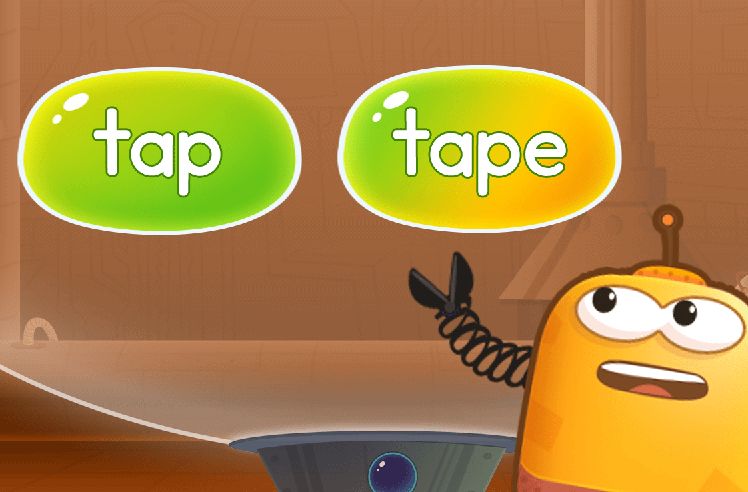Understanding how to teach vowels is crucial in guiding kids through the early stages of literacy. Vowels are the core of nearly every word, and mastering them sets a foundation for reading and writing. However, vowels can be tricky for kids because they have multiple sounds and can often sound similar to one another. This complexity can lead to confusion when trying to distinguish between them.
Math & ELA | PreK To Grade 5
Kids see fun.
You see real learning outcomes.
Watch your kids fall in love with math & reading through our scientifically designed curriculum.
Parents, try for free Teachers, use for free
This blog post aims to simplify the process, offering straightforward strategies and insights into teaching vowel sounds effectively. We’ll explore practical steps to introduce vowels, differentiate between their sounds, and integrate these lessons into fun, engaging activities.
What are Vowels?
Vowels are letters that represent open sounds, meaning there is no blockage of airflow in the mouth when they are pronounced. These letters include A, E, I, O, U, and sometimes Y.
Vowel sounds for kids are fundamental because they appear in nearly every word, making them essential for speaking and reading. Unlike consonants, which form sounds by closing or restricting airflow, vowels allow for a smooth flow of air, giving words their structure and making them easier to pronounce. In reading, understanding vowels and their sounds helps kids decode words more efficiently, improving their reading fluency and comprehension.
Related Reading: Best Reading Comprehension Activities for Kids
What Are The Types Of Vowel Sounds?
There are two main types of vowel sounds: short and long vowel sounds.
- Short vowel sounds occur when the vowel is pronounced in its shortest form, as in the words “cat,” “bed,” “sit,” “top,” and “mud.”
- Long vowel sounds happen when the vowel says its name, like in “cake,” “tree,” “kite,” “boat,” and “cube.”
Besides these basic sounds, there are advanced vowel sounds known as vowel digraphs and diphthongs.
- Vowel digraphs are two vowels that together make one sound, such as “ea” in “bread” or “oo” in “book.”
- Diphthongs are unique because they blend two vowel sounds within the same syllable, making the sound start as one vowel and glide into another, like the “oi” in “coin” and the “ou” in “cloud.”
When is Your Child Ready to Learn Vowel?
Knowing when your child is ready to learn vowels involves observing their interest in words and their ability to speak and recognize letters.
- Typically, children show readiness when they start asking questions about words and letters, showing curiosity about how words are formed.
- Another sign is when they can pronounce words clearly and can identify different letters in the alphabet, especially if they can recognize the letters A, E, I, O, U, and sometimes Y, by name.
- Children who enjoy listening to stories and try to mimic reading by themselves, looking at books and pretending to tell the story, are often ready to start learning about vowels.
- Additionally, if your child has begun to show interest in writing or drawing letters, it’s a good indication they are ready to understand the concept of vowels and how they fit into words.
Related Reading: How to Teach Alphabet to Kids: 10 Best Tips
Step-by-Step Guide to Teach Vowels to Kids
1. Introduction to Vowels Names

The journey of how to teach vowels begins with familiarizing children with the vowel names: A, E, I, O, U, and sometimes Y. This foundational step uses tactile engagement, such as play dough, to create a multisensory learning experience. Children shape each vowel, merging visual, auditory, and tactile inputs to solidify their understanding of these critical letters.
Activities: Use play dough for children to form vowel shapes, engaging them in songs and flashcards highlighting each vowel’s unique sound and form.
Milestones: Achievements at this stage include recognizing vowel names, differentiation by shape and sound, and displaying an active interest through tactile play. This base knowledge is crucial for moving into more complex vowel sound differentiation.
2. Vowel Differentiation

With a solid grasp of the vowel names and their basic sounds, the next natural step is to help children understand the nuances between them. The similarity between vowel sounds can pose a challenge, necessitating creative teaching tools like stick puppets to clarify these differences.
Activities: Create and use stick puppets for interactive storytelling or role-playing activities that emphasize the distinct sounds of each vowel. This could involve adventures where “A” explores space and “E” ventures through environments, each time focusing on the vowel’s sound in various words.
Milestones:
- Key achievements include distinguishing between different vowel sounds and associating them with their respective characters or stories.
- Successfully selecting the appropriate vowel puppet upon hearing its sound demonstrates a critical understanding of vowel differentiation.
Kids love practicing when it’s an interactive activity. Start with these short vowel sound games:
3. Word Families Introduction
After children become familiar with vowels’ names and basic sounds through tactile engagement and differentiation activities, it’s time to introduce them to word families. This step builds on their understanding of individual vowel sounds by grouping vowels in the context of words, making it easier to recognize patterns.
Activities: Begin with simple CVC word families, such as “-at” (cat, hat, mat). Use engaging activities like creating word family trees or matching games to reinforce these groups.
Milestones: Children should be able to recognize and produce words within the same family, demonstrating an understanding of short vowel sounds in context.
Start with these CVC word games:
4. Practice with Short Vowel Sounds
With a grasp of word families, children are now ready to deepen their practice with short vowel sounds. This phase emphasizes applying their knowledge through varied and repetitive practice, enhancing their ability to decode words more fluently.
How to teach short vowel sounds: Engage children in activities that require them to listen for, identify, and produce short vowel sounds in new words. This can include interactive games, such as vowel hopscotch, where they jump to spaces labeled with short vowel words, or sorting activities with objects or pictures that match short vowel sounds.
Milestones:
Success in this stage is marked by a child’s increased confidence and accuracy in identifying short vowel sounds across different words and contexts, preparing them to introduce long vowel sounds and the complexities they bring.
Here are some fun games to practice words with short vowels:
5. Introduction to Long Vowel Sounds
Once children are comfortable with short vowel sounds and can easily navigate word families, introducing long vowel sounds is the next logical step. This includes understanding the role of the silent ‘e’ and how it transforms short vowel sounds into long ones, marking a significant milestone in their phonetic development.
How to teach long vowel sounds: Start with contrasting pairs (e.g., “cap” vs. “cape”) to highlight the impact of the silent ‘e’. Use manipulatives to visually and tactilely reinforce this concept, like adding a physical ‘e’ to the end of words. Activities can also include word building and interactive storytelling incorporating long vowel words.
Milestones:
Mastery of this step is shown when children can independently recognize and apply the silent ‘e’ rule to convert short vowel words to long vowel words and correctly pronounce long vowel sounds. This understanding enriches their reading skills and prepares them for more advanced vowel patterns, such as vowel digraphs and diphthongs.
Here are some fun games to understand contrasting long vowel sound words:
6. Advanced Vowel Sounds
Introduce children to advanced vowel sounds, including vowel digraphs (two vowels that make one sound, like “ea” in “leaf”) and diphthongs (a blend of two vowel sounds within the same syllable, like “oi” in “coin”). This step is crucial in how to teach vowels as it expands the child’s ability to decode a wider range of words.
Activities: Create visual aids that group examples of digraphs and diphthongs.
Use matching games where children pair words with their corresponding sounds and engage in fill-in-the-blank activities with missing digraphs or diphthongs.
Milestones:
- Recognition and pronunciation of vowel digraphs and diphthongs.
- Ability to match digraphs and diphthongs with their sounds and example words.
- Understanding the role of these advanced sounds in word construction and meaning.
Start blending with vowel wit these fun games:
7. Reading and Application
Apply the understanding of all vowel sounds—short, long, digraphs, and diphthongs—into reading practice. This involves gradually moving from recognizing and pronouncing vowel sounds in isolation to applying them in words, sentences, and full texts. This step is critical in how to teach vowels as it brings together all the previous learning into practical application.
Activities: Begin with reading words and simple sentences that incorporate a variety of vowel sounds. Progress to reading short paragraphs and books, focusing on identifying vowel sounds and understanding their influence on word meaning and pronunciation.
Milestones:
- Successful identification and pronunciation of vowel sounds within the context of reading.
- Increased fluency and comprehension in reading texts with varied vowel sounds.
- Demonstrating the ability to decode unfamiliar words by applying knowledge of vowel sounds.
Tips on Teaching Different Types of Vowel Sounds
3 Tips on Teaching Short Vowel Sounds
1. Sound Recognition: Start by focusing on one short vowel sound at a time, using simple, clear examples. Engage children in listening and repeating activities, ensuring they can accurately identify and produce the sound. Use images or objects that contain the vowel sound to help solidify the connection between the sound and its visual representation.
Use these worksheets that can help your kids to associate vowel sounds with pictures:
2. Word Association: Once the child is familiar with the sound, introduce CVC (consonant-vowel-consonant) words incorporating the short vowel. Practice reading and spelling these words together, emphasizing the vowel sound in the middle. Games like matching words to pictures or filling in missing vowels in words can make this step interactive and fun.
Practice with these filling in the missing vowels worksheets:
3. Sentence Formation: Encourage children to construct simple sentences using words with the short vowel sounds they’ve learned. This helps reinforce their understanding in a more complex context and improves their ability to recognize these sounds in everyday communication.
3 Tips on Teaching Long Vowel Sounds
1. Rule Introduction: Begin with the basic rules that govern long vowel sounds, such as “When a vowel says its name, it’s a long vowel.” Introduce the concept of silent ‘e’ and vowel pairs that often represent long sounds (e.g., “ea” in “read”).
2. Application in Words: Practice with words that contain long vowel sounds, highlighting the rule or pattern that each word follows. Use visual aids and physical activities, such as word cards or interactive digital apps, to enhance engagement and retention.
3. Reading for Comprehension: Incorporate long vowel sounds into reading exercises, starting with simple sentences and gradually moving to paragraphs and short stories. Focus on comprehension and the ability to identify long vowel sounds within the context of reading, reinforcing their understanding through practical application.
Related Reading: How to Teach Kids to Read: 9 Easy Steps
Conclusion
Understanding how to teach vowels effectively is crucial for developing strong reading and writing skills in children. We can make learning fun and impactful by breaking down the process into manageable steps and engaging activities. Whether focusing on short or long vowel sounds, patience, practice, and encouragement are key.
Related Reading: How to Teach Phonics to Kids – A Step By Step Guide
Frequently Asked Questions (FAQs)
How do I teach my 4-year-old vowels?
Start with simple, fun activities like singing vowel songs, using flashcards, or playing with letter magnets. Focus on one vowel at a time, emphasizing its sound and shape to help your child gradually recognize and remember each vowel.
How do you explain vowels to kindergarteners?
Teaching vowels to kindergarten kids can be simple. Explain vowels as special sounds our mouth makes without closing any inside part. Use visuals and examples, such as pictures of objects with vowel sounds, and encourage them to make the sounds themselves.
How do I get my child to remember vowels?
Repetition and engaging activities are key. Incorporate vowel sounds into daily activities, play games that involve finding vowels in words, and use songs or rhymes to make the learning process enjoyable and memorable.
What vowels do you teach first?
It’s often best to start with the short vowel sounds (a, e, i, o, u) because they are more common and consistent in their pronunciation, making them easier for young learners to grasp and apply in early reading skills.
What are some of the vowels for kindergarten kids that I should start with?
A: cat, hat, mat
E: bed, red, net
I: sit, pin, lip
O: pot, hot, top
U: sun, run, mud
These examples are easy to pronounce and often found in their daily vocabulary, making them excellent starting points for teaching vowels.




















































